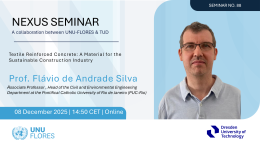UN-Water (2013) defines water security as “the capacity of a population to safeguard sustainable access to adequate quantities of acceptable quality water for sustaining livelihoods, human well-being, and socio-economic development, for ensuring protection against water-borne pollution and water-related disasters, and for preserving ecosystems in a climate of peace and political stability.” Creating a water-secure society is therefore one of the top priorities for governments and policymakers across the globe. Nature-based Solutions (NbS) are increasingly gaining prominence in urban sustainability discourses, particularly in the context of climate adaptation, resilience-building, and the promotion of social, environmental, and economic co-benefits.
This research builds on those foundations by situating NbS within a resource nexus perspective. Urban water systems are deeply intertwined with energy, food, land, and ecosystems, meaning that interventions in one domain often generate synergies—or trade-offs—across others. For instance, watershed restoration can simultaneously enhance flood regulation, groundwater recharge, biodiversity, and urban cooling, while also influencing land competition or agricultural water use. By explicitly applying a nexus lens, this research will examine how NbS can strengthen water security in cities while also contributing to broader climate resilience and sustainability goals.
The study will review and synthesize existing approaches and tools for assessing water security and NbS in urban areas, and further develop or adapt these tools to integrate nexus-based evaluation. It will identify and evaluate suitable NbS measures that not only reduce flood and drought risks but also deliver co-benefits across sectors. The application will be showcased in a city in the Global South, providing context-sensitive insights into how NbS can serve as a transformative pathway for climate adaptation. Ultimately, the research aims to generate actionable knowledge for policymakers, planners, and practitioners by bridging hydrological modeling, climate risk assessment, and policy analysis with cross-sectoral sustainability considerations.




